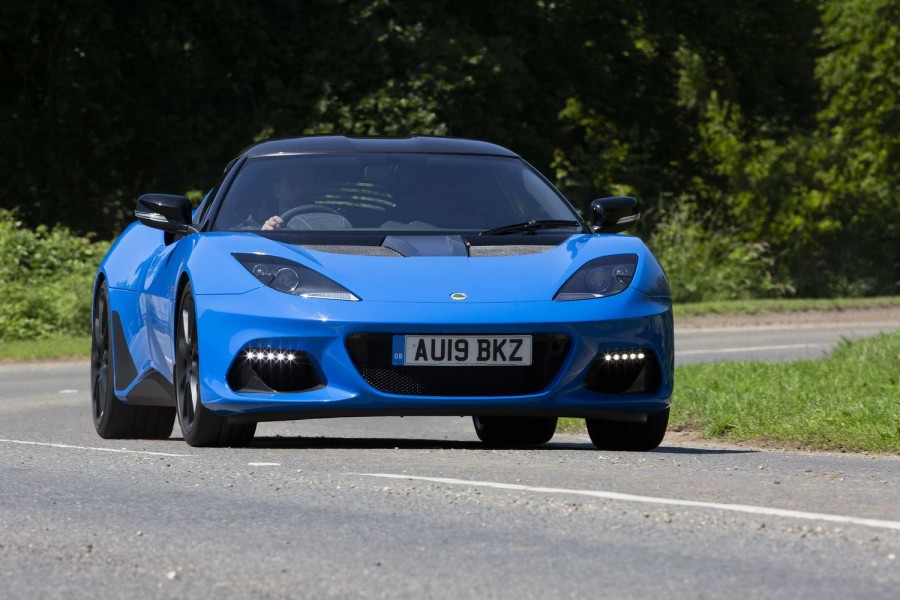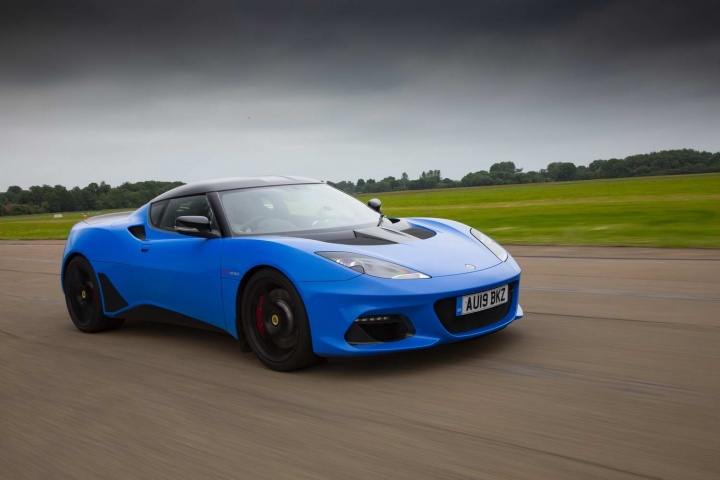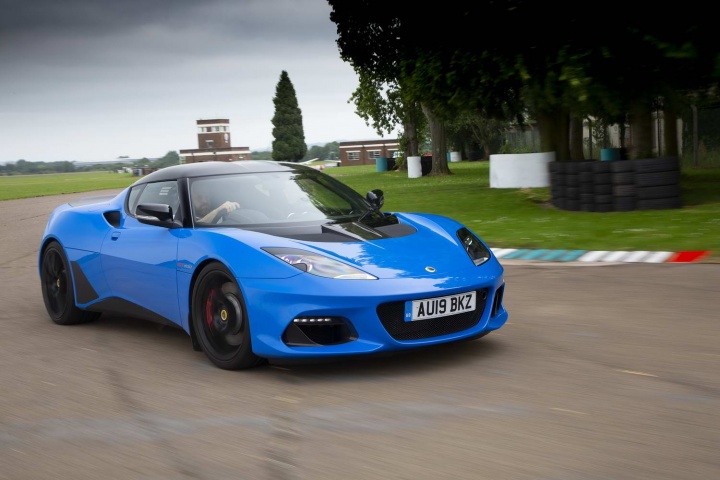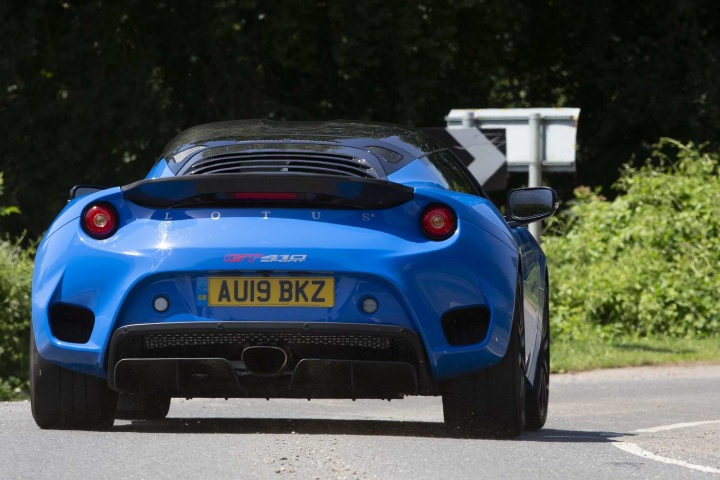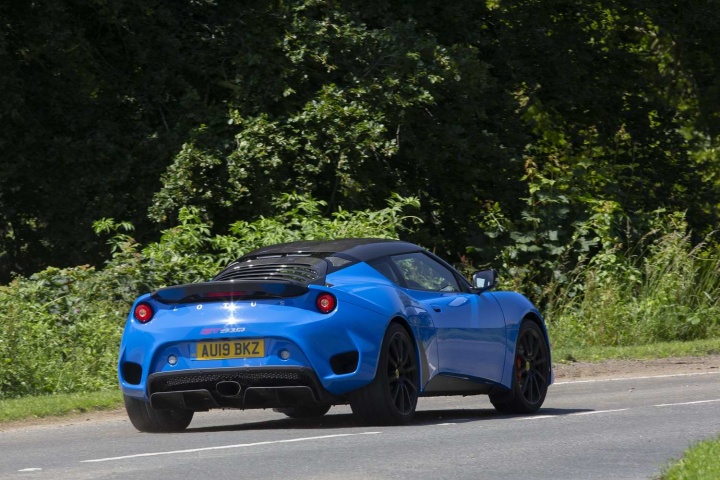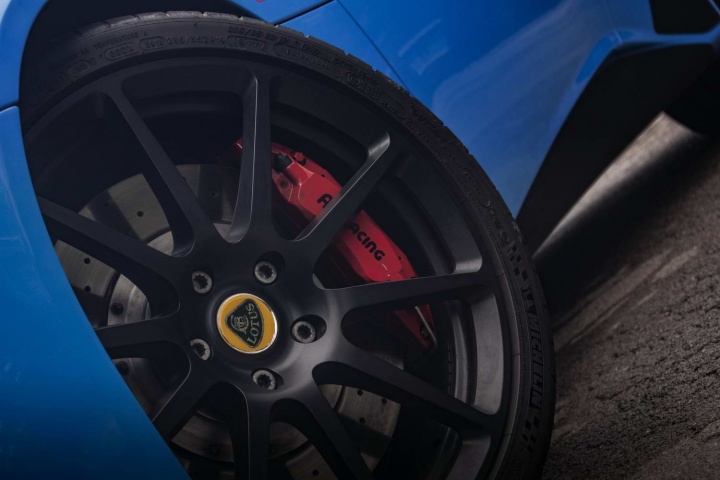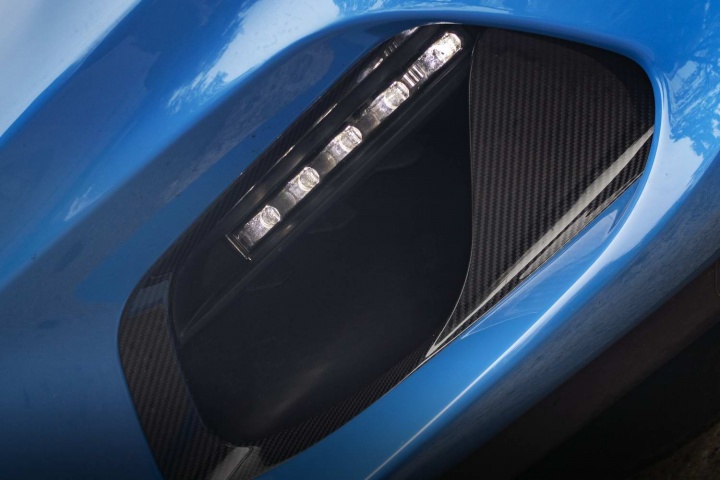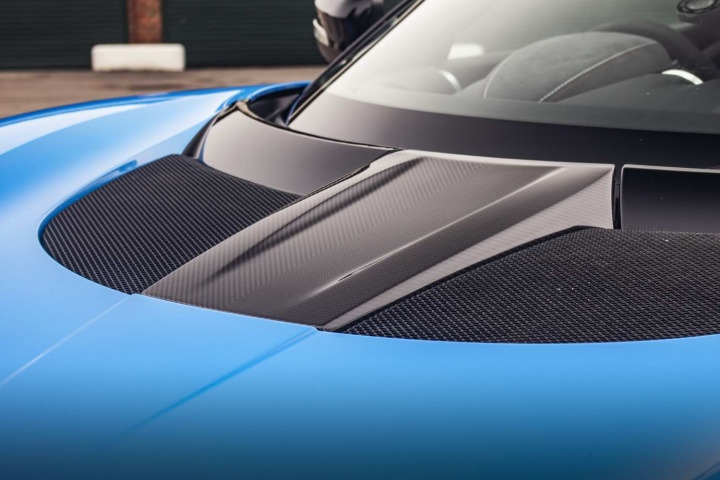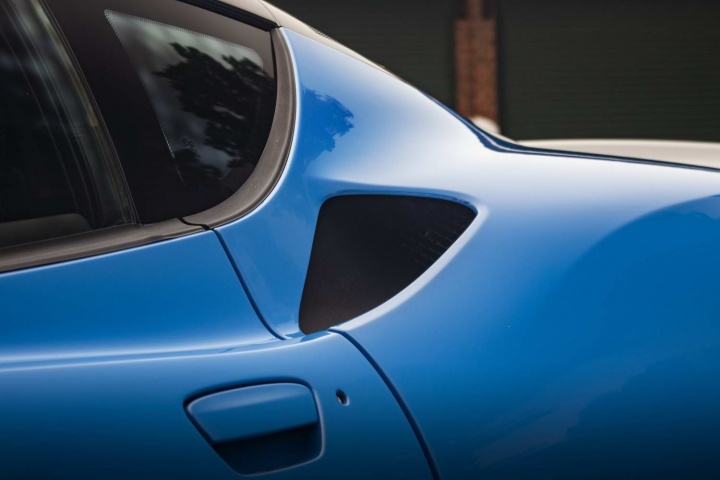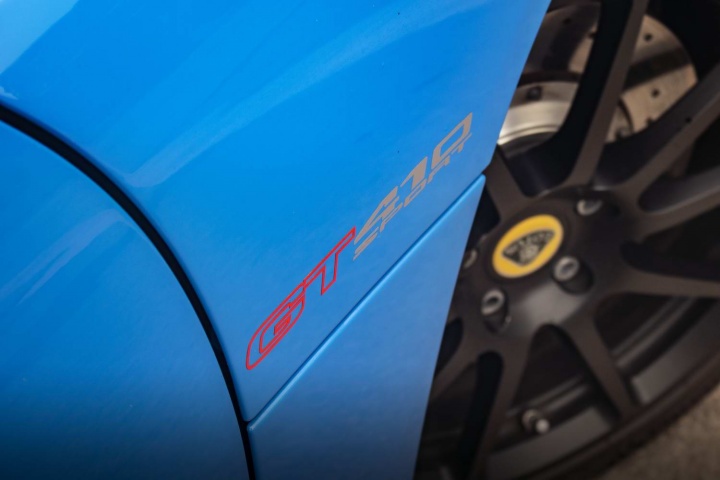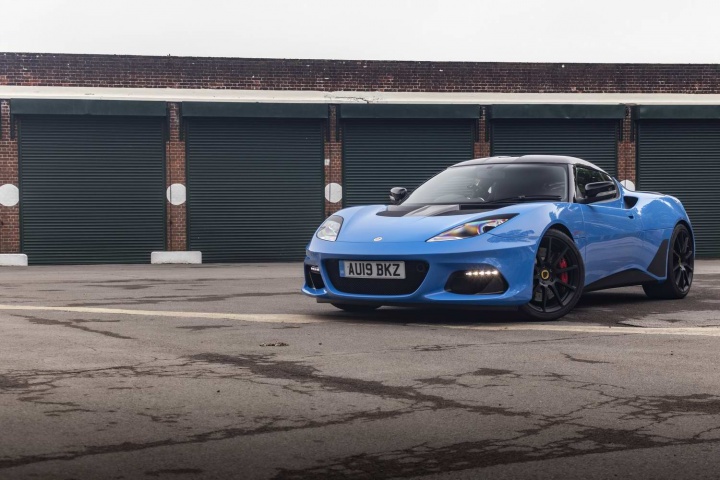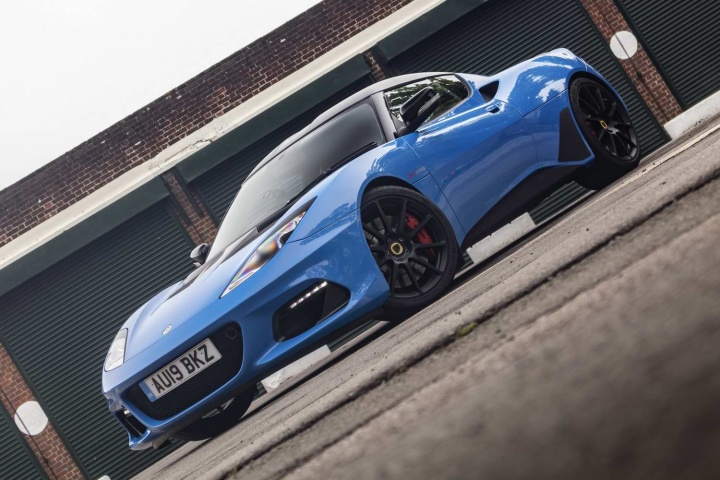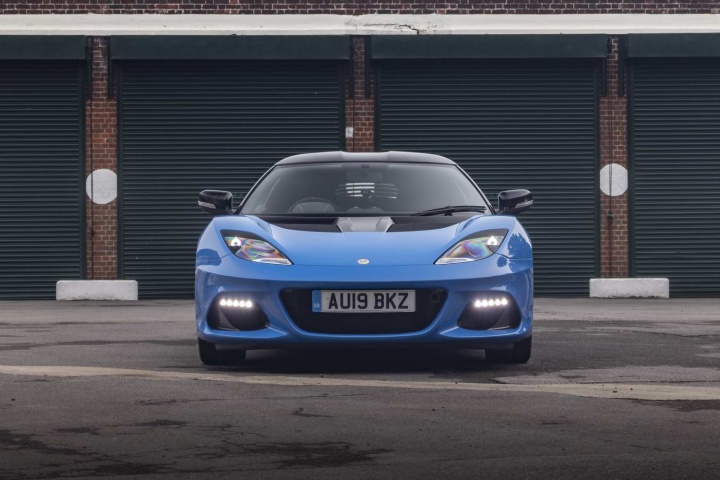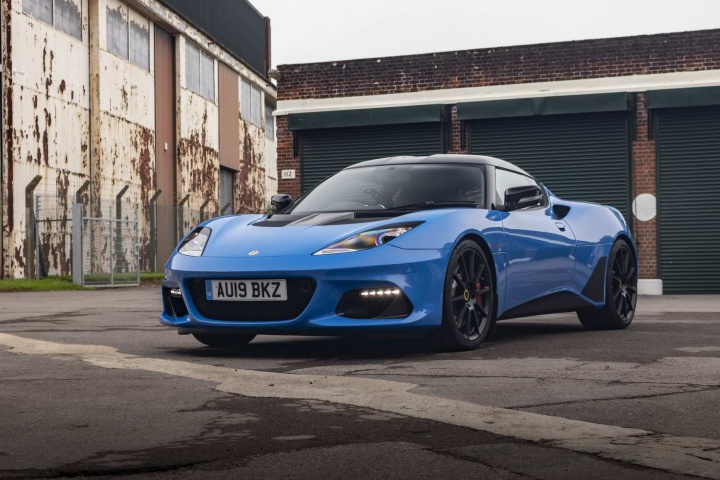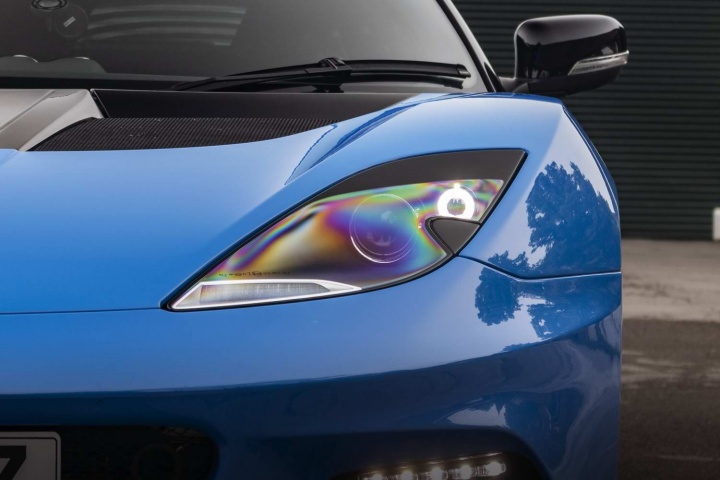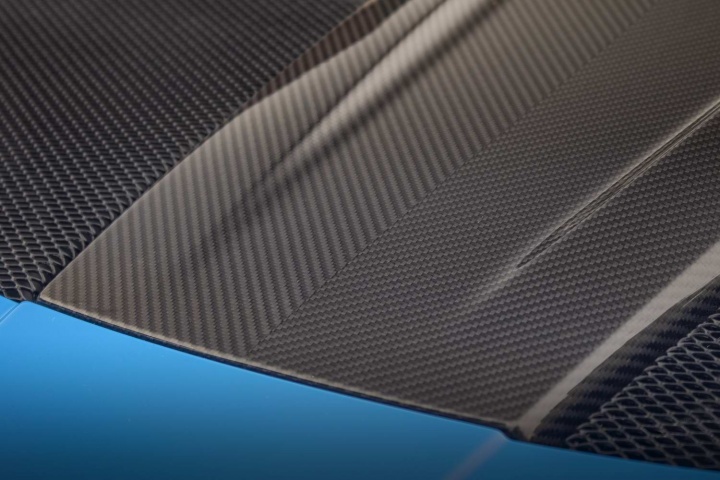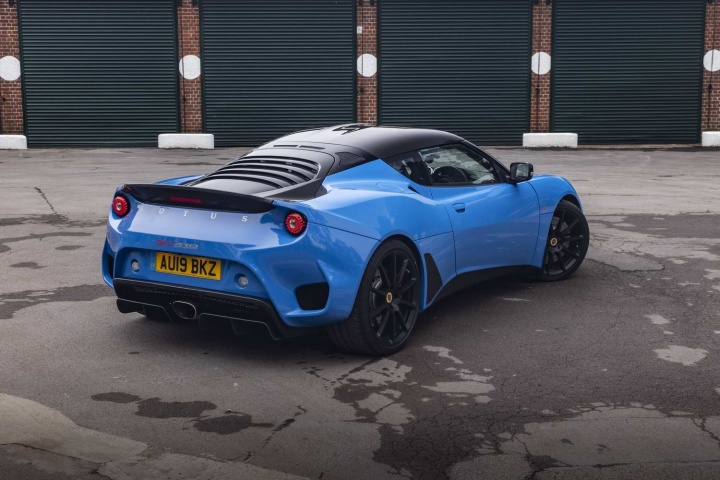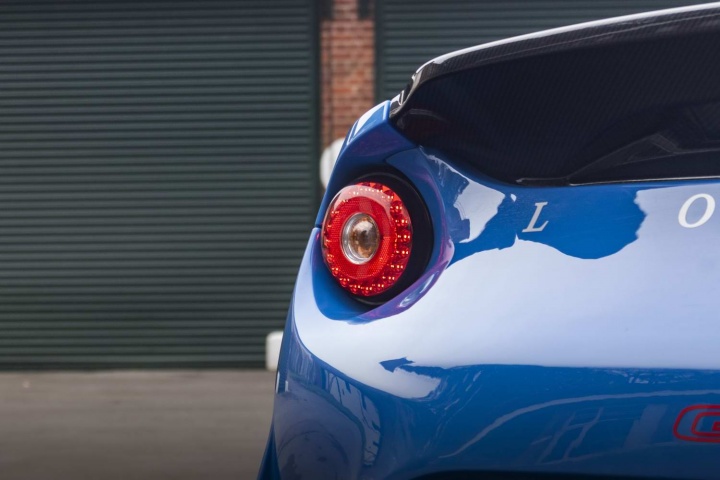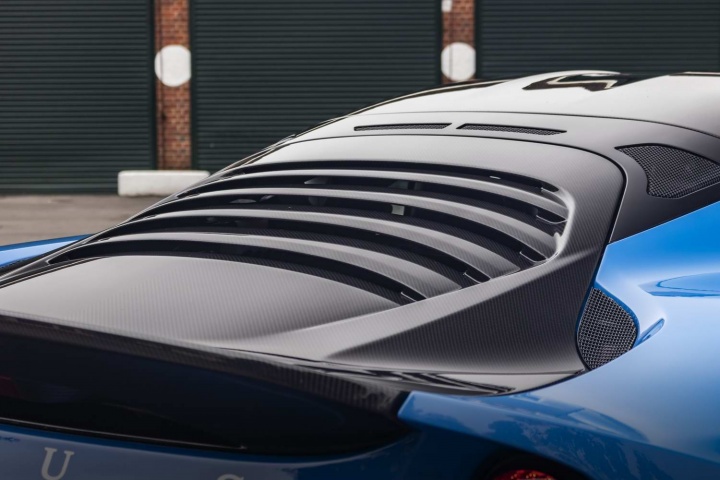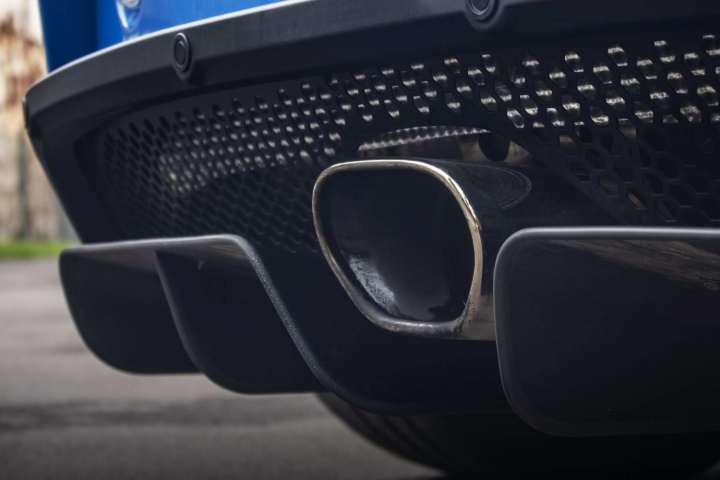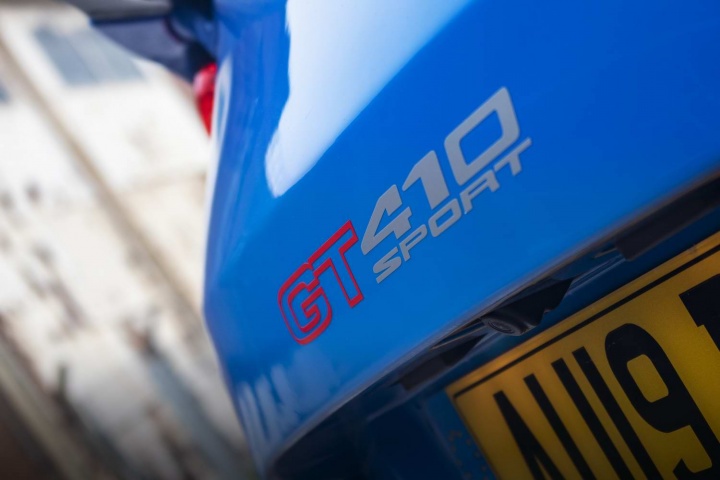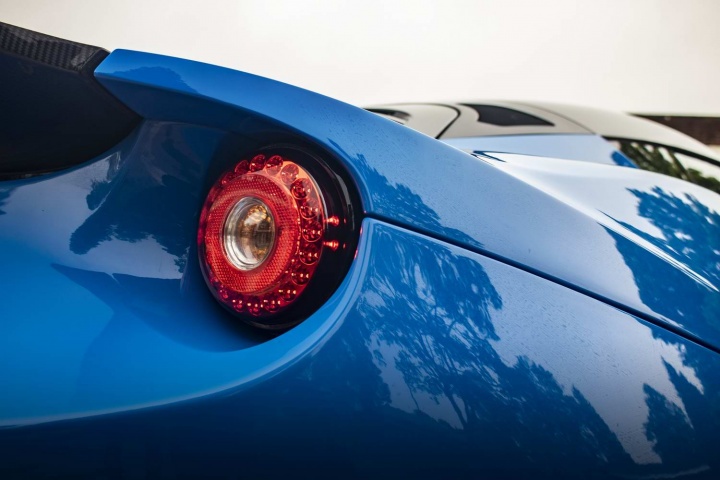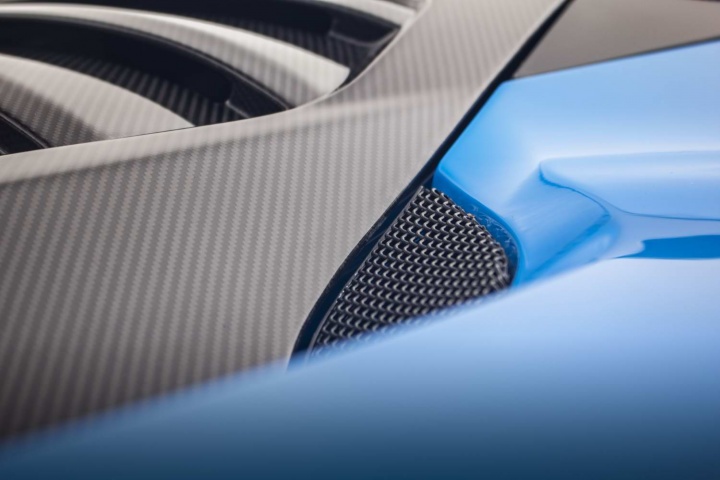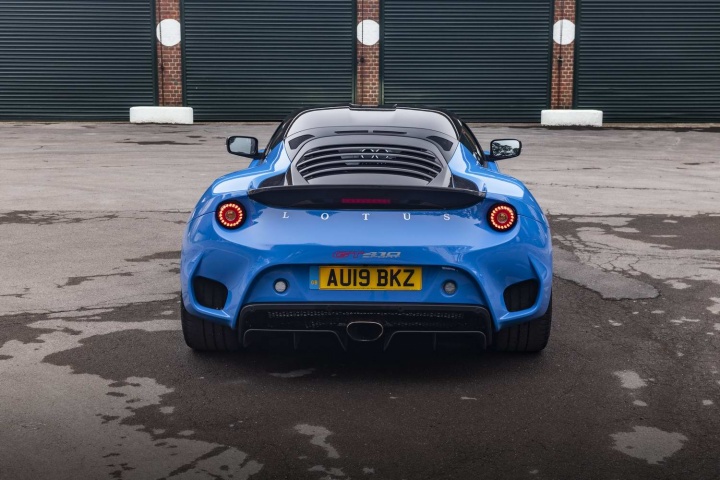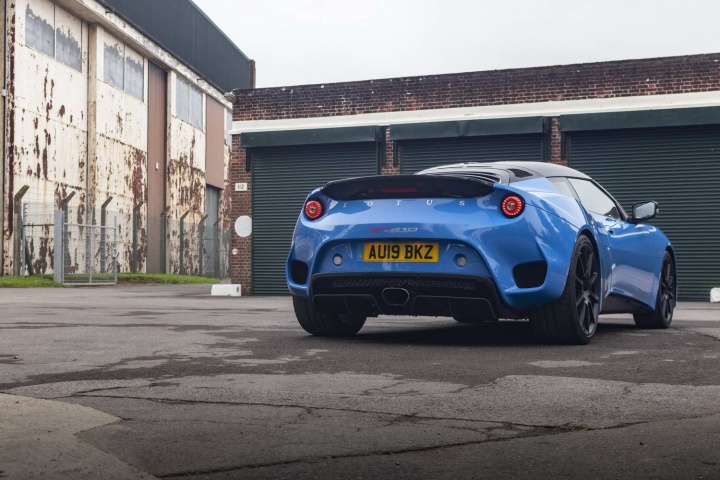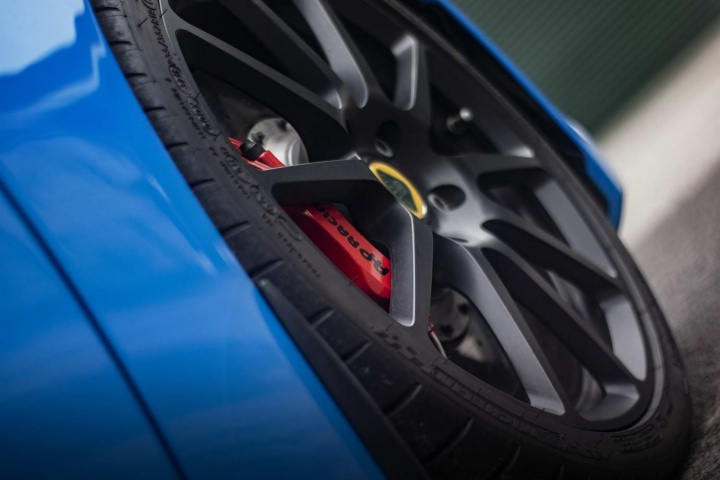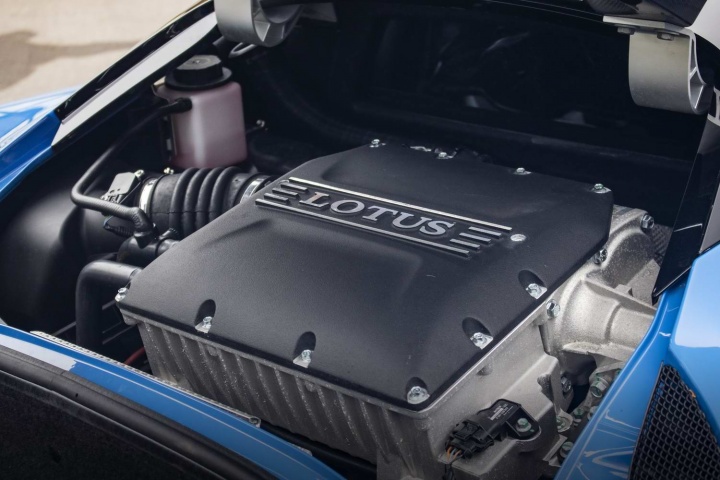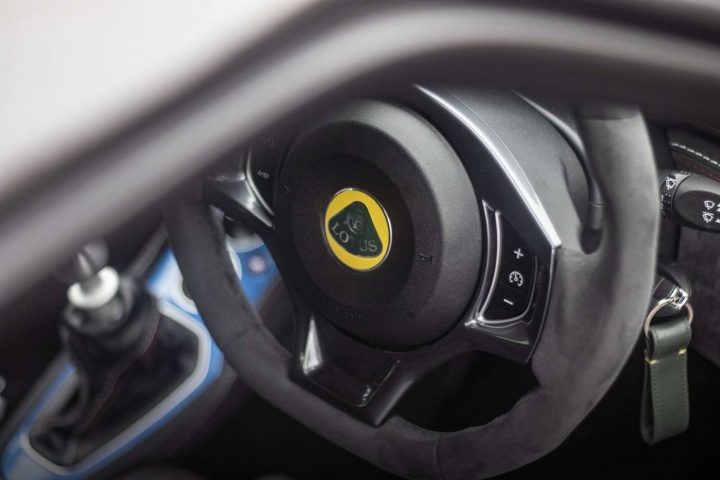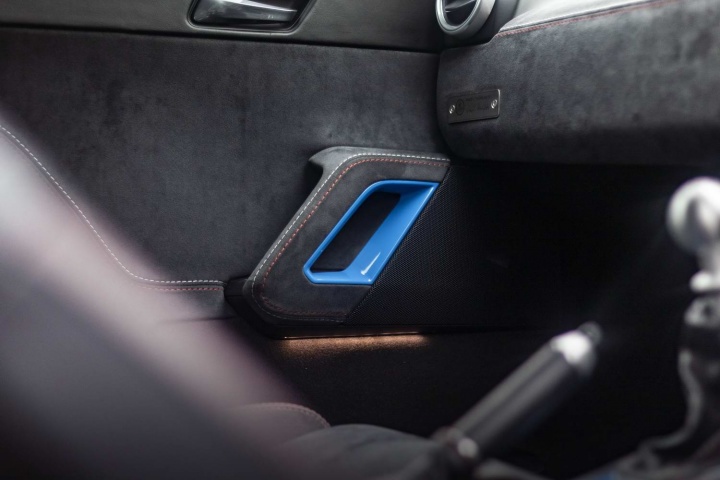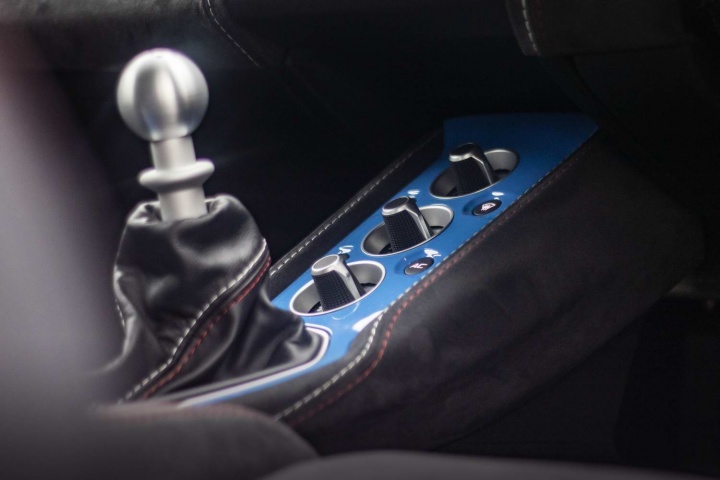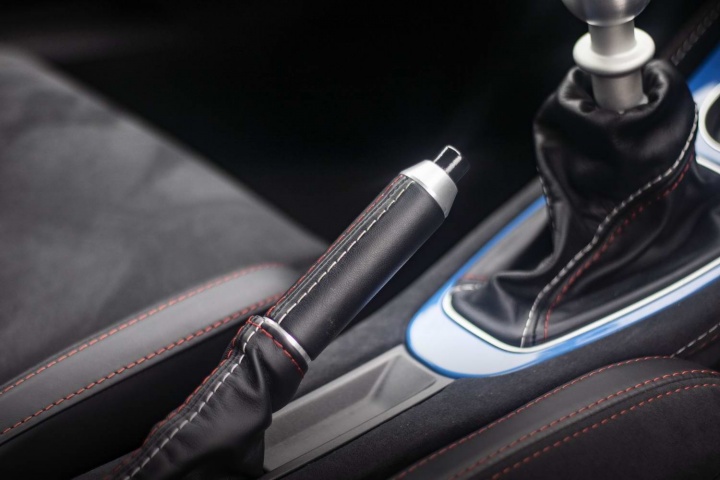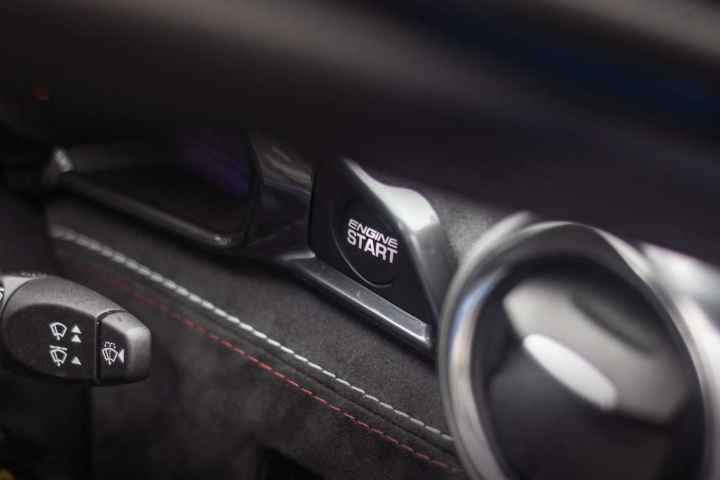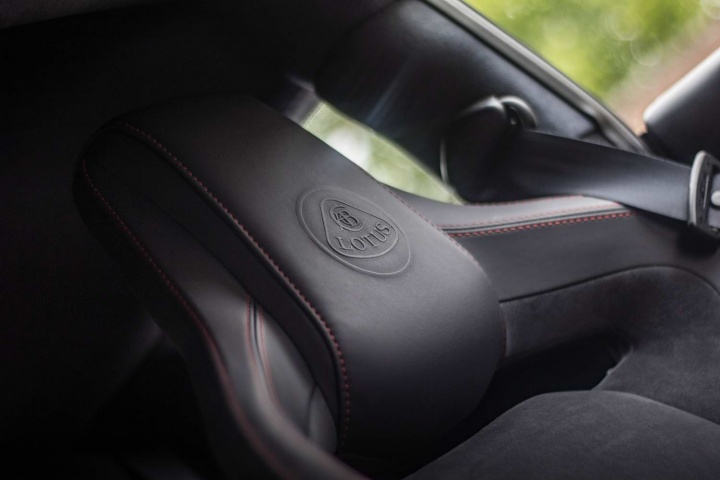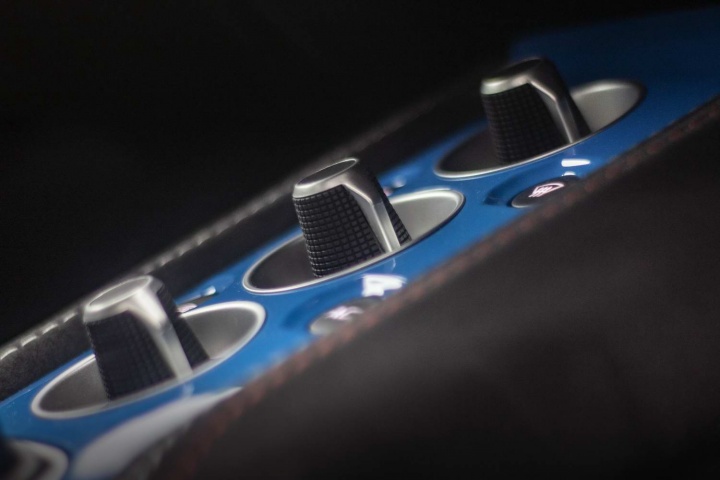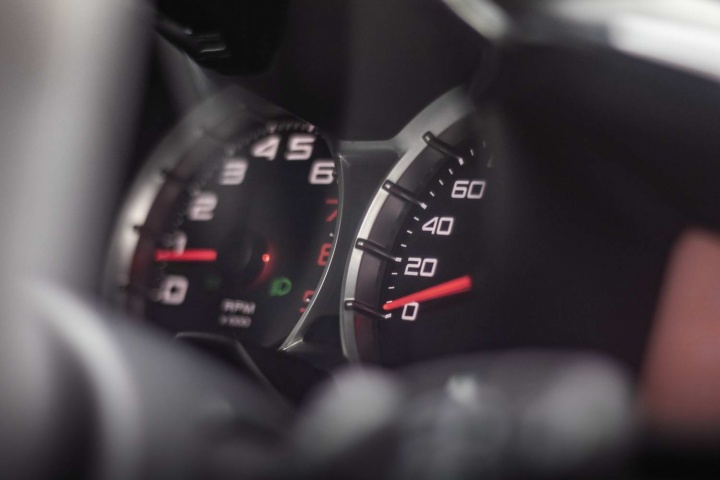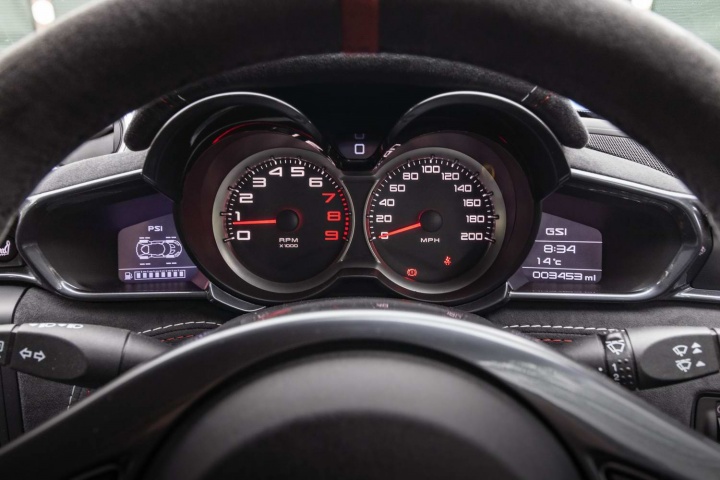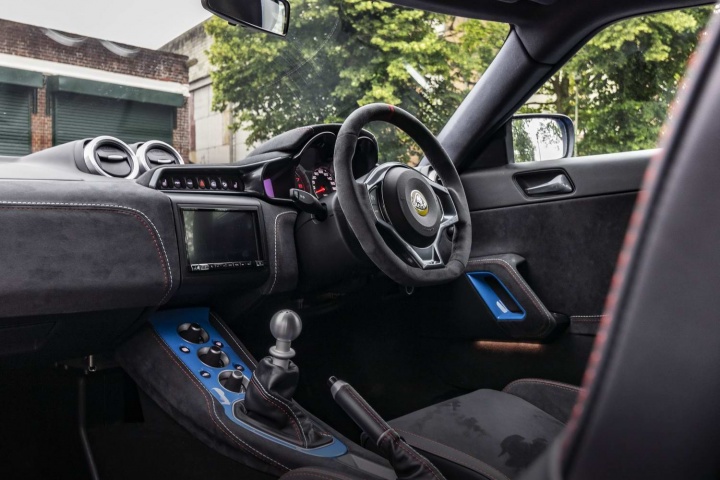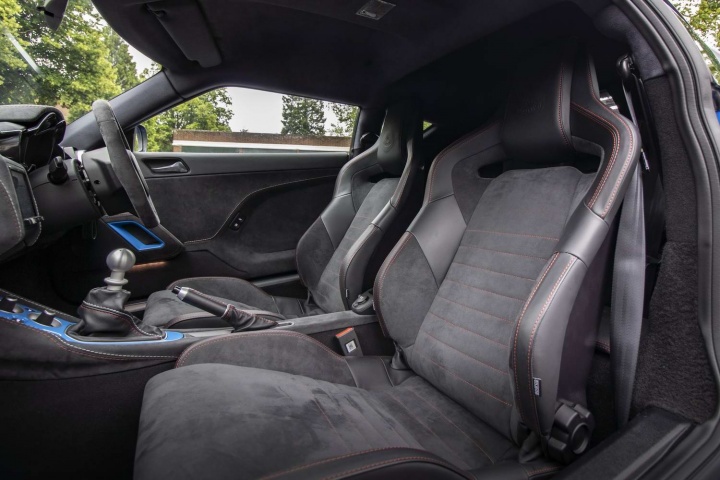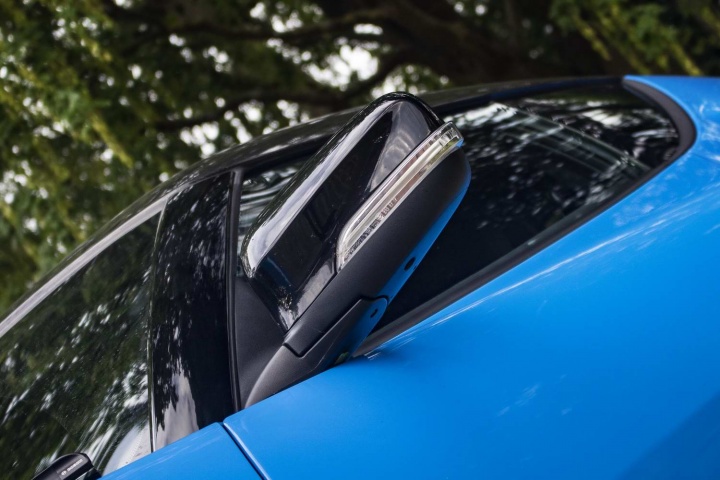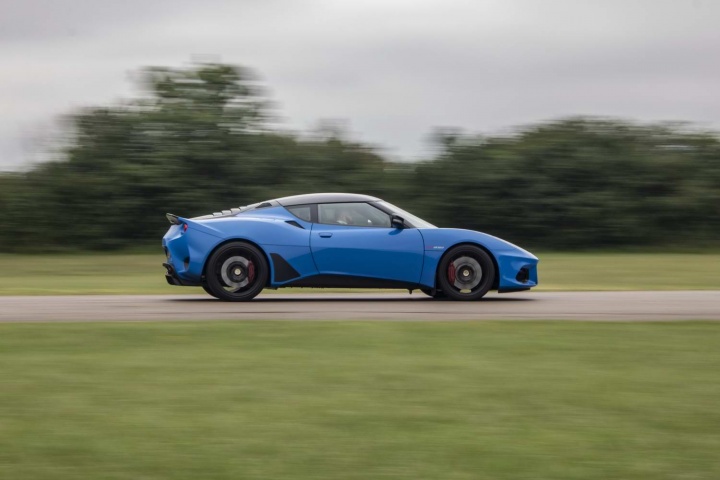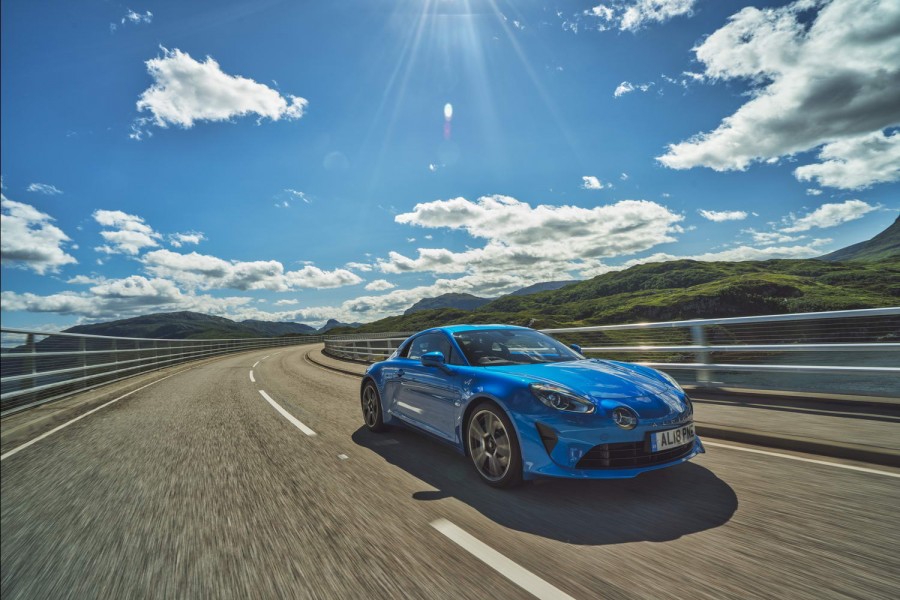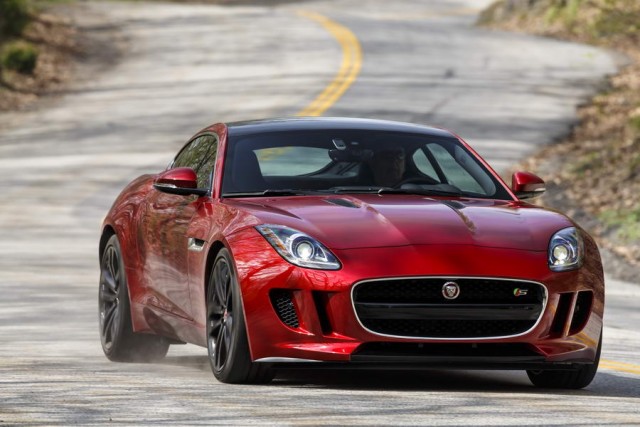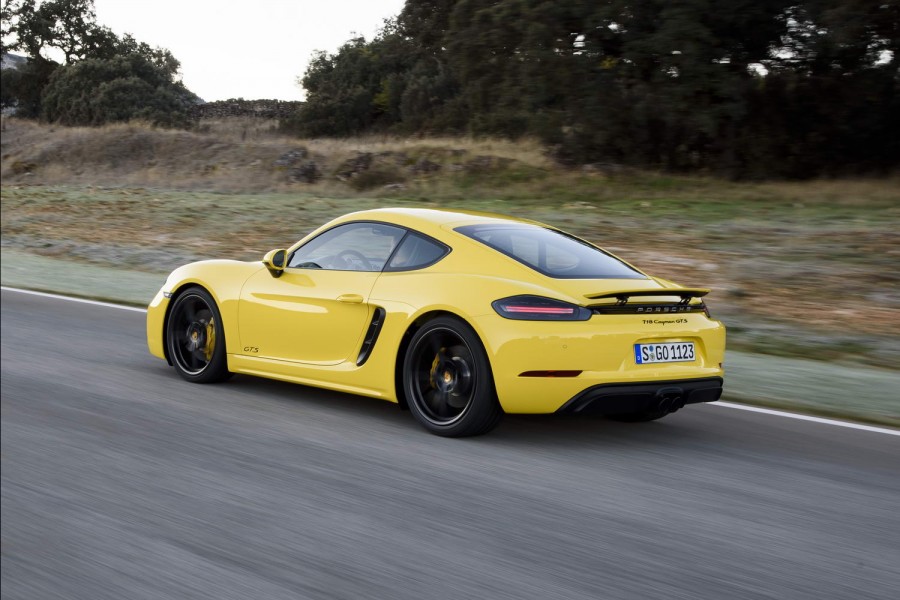This is where Lotus' real magic is most evident. By all means, drive one of the company's more obvious sports cars - like the evergreen Elise or the scintillating Exige - but this Evora shows off just how the 'simplify, then add lightness' ethos of this company can result in a magnificent GT that's nevertheless one of the sharpest, most rewarding things you could ever hope to drive. How more people haven't cottoned onto the Evora as yet is beyond us; it is terrific.
In the metal
The Lotus Evora is a handsome thing, using much of Lotus' brand-wide trademarks to the degree that if you prized the fabled yellow-and-green roundel off its nose, then most people could still tell you what make of car it was. There are the small, round rear lights, large central exhaust and faired-in headlamp units that tie it in with its Lotus siblings, but as this car is a GT, with the option of a 2+2 layout, then the proportions are slightly... unusual. It's trying to pack four seats (of sorts) into a small body with the engine mounted in the middle, so while we like the way the Evora GT410 looks, we wouldn't say it was out and out pretty.
The interior is a relative delight, given we drove the Evora between time in an Exige 410 Sport and an Elise 250 Cup; two machines in which the act of just getting in and out of the cabin can be something of a faff. With the Evora, you open the door wide... and just climb in, like on a 'normal' car. Once installed in the driver's seat, you'll like the comfort of the sculpted bucket chairs and the wonderful driving position, and you'll spot some nice touches like the body-coloured surrounds for the rotary dials of the climate controls, as well as lots and lots and lots of Alcantara; it clothes most of the dashboard, the door cards and the steering wheel. There's also no exposed gear linkage in here, as with the Elise and Exige, so instead you have a leather gaiter around the base of the manual stick - remember those?
Anyway, other things you might clock are fairly primitive digital displays in the mainly analogue instrument cluster, a pair of utterly token rear seats (even children would struggle to sit in the Evora's rear pews), a proprietary Alpine head unit for what passes as infotainment and, if you've driven the earliest examples of the Ford Focus and Mondeo, then you'll know from whence Lotus sourced the column stalks and the joystick for adjusting the Evora's exterior mirrors. It's a nice cabin in the Evora, but it's one that was clearly built on a tight budget and it's an area in which the Lotus cannot (yet) match its mainstream GT rivals.
Driving it
If those aforementioned GT rivals are feeling smug after the first round of appraisal, thinking their smoother exteriors and superior cockpits are going to seal the deal, then they're in for a shock. The Evora is a stunner to drive. It's absolutely fantastic. And yet, it doesn't do things in the same manner as the other two current Lotus products (which are both out-and-out sports cars, granted) - but it is no less beguiling as a result.
For a start, it uses the same 416hp/410Nm supercharged 3.5-litre V6 petrol engine as the Exige and it's mounted in the middle of the car, as well. It's also visible in the same way as it is in the Exige: look in the Evora's rear-view mirror and all you're greeted by is the top of the engine, complete with its throttle actuator, and some thin slats of daylight behind it courtesy of the largely blanked-out rear windscreen. However, there's much more sound suppression in the Evora, as befits its GT nature. So the engine isn't anything like as loud, although it still makes all the right noises when you decide to rev the GT410 Sport right out; it's a sensational, crisp V6 note, unfettered by silly augmentation, and it will make the hairs on the back of your neck stand up when you hear it for the first time.
The comfort-oriented spec of the Evora and that extra sound-deadening also make it (relatively) heavy; for a Lotus, at any rate. It tips the scales at 1,361kg as a manual and 1,368kg with the automatic gearbox. This means it's less accelerative than the 1,110kg Exige 410 Sport (the respective 0-100km/h times are 4.2 seconds plays 3.6 seconds), although it is capable of hitting 300km/h flat out. But 1,361kg makes it no heavier than your average hatchback these days, which means it feels like a 'true' Lotus to drive.
As in, it's sublime. Its ride quality is serene, courtesy of some of the best spring-and-damper rates in the business. The steering is assisted on the Evora but it's still one of the finest set-ups in the modern motoring era, with lovely, light weighting, pinpoint accuracy and enough feel and feedback to disgrace a Porsche. The action of the six-speed gearbox feels fluid and well-judged, and so you can imagine going many hundreds of kilometres in one hit in the Evora GT410 Sport. And yet it's as scalpel-sharp to drive quickly as any good Lotus ought to be. Sharp turn-in, magnificent body control, strong brakes and ridiculous performance doled out by that midships V6 make the Evora transform from docile to demented in the blink of an eye.
It feels very much like a more muscular version of the Alpine A110, in fact, and we can't pay a car a much higher compliment than that, believe us. Naturally, Lotus would rightly point out that the Evora has been around longer than the revived A110, but as Lotus has form in fettling its products throughout their lifespans - so that they're always better to drive when they're near the end of their production cycle than at the start of them - it feels like the Evora has finally matured to the brink of perfection for 2019.
What you get for your money
There is just one specification for the Evora, which is the GT410 Sport - you simply choose if you want a manual or an automatic transmission. That seven-inch Alpine stereo does at least support navigation, as well as Apple CarPlay and Android Auto, while air conditioning and rear parking sensors are part of a reasonably minimal kit list. What you're paying for with Lotus is the engineering expertise that has gone into the car, rather than the most cutting-edge of interior technology and gadgetry.
Summary
The Evora GT410 Sport is a GT first and a sports car second, or so manufacturer Lotus would have you believe. In truth, there are better two-seat and 2+2 coupes out there for grand touring duties, mainly because they have more polished interiors with more toys. But in terms of the actual driving experience, there's nothing wrong with the way the Evora goes about its business - its ride quality and noise suppression are largely second-to-none in this class. And when the mood takes you, then Lotus' sports-car DNA shines through so brightly here that you can't fail but to love the thing. It's brilliant.

